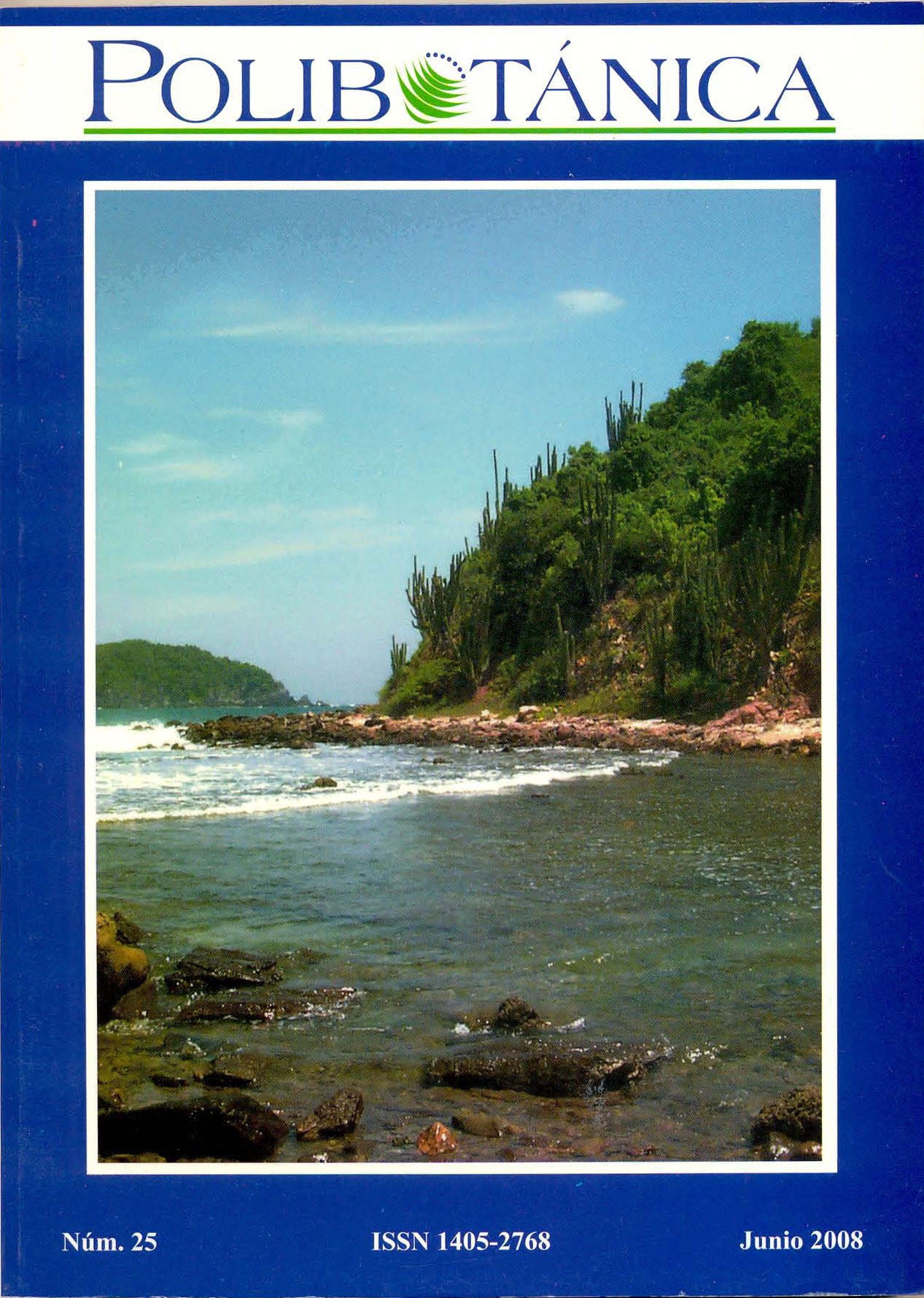VEGETACIÓN Y FLORA DE UN BOSQUE RELICTUAL DE PICEA CHIHUAHUANA MARTÍNEZ DEL NORTE DE MÉXICO
Abstract
Forty eight 20 x 20 m sites were randomly
established within the area of distribution of
Picea chihuahuana, the objective being to
elucidate the structure and composition of
the forest. Dasonomic variables, including
species frequency, height, DAP (diameter
at breast height), overstory cover in m2, as
well as such ecological variables as altitude,
slope, exposure, depth of organic material,
and soil pH, were recorded. Additionally, 10
1 m2 plots of were established within each
400 m2 site, in which the herbaceous plant
cover in the understory was recorded in both
dry and wet seasons. The vegetation of the
study area is composed primarily of units
of conifer forests and mixed conifer-oak
forests. The associations of widest distribution are those consisting of combinations
of conifers. In lower proportions are combinations with oaks. In total, 14 vegetative
associations were defined. Floristically, 53
families, 141 genera, and 199 species of vascular plants were recorded; and phytogeographically, it was concluded that the local
flora is geographically related to the flora
of western North America. With respect to
conservation needs, Picea chihuahuana is an
endangered species; Mammillopsis senilis is
a threatened species; and Arbutus occidentalis, Peduncularis glabra, and Pseudotsuga
menziesii are special-protection species.
Key words: vegetation, flora, Picea chihuahuana, conservation, Durango.
Downloads
Published
Issue
Section
License

Polibotánica by Departamento de Botánica de la Escuela Nacional de Ciencias Biológicas del Instituto Politécnico Nacional se distribuye bajo una Licencia Creative Commons Atribución-NoComercial-CompartirIgual 4.0 Internacional.




















